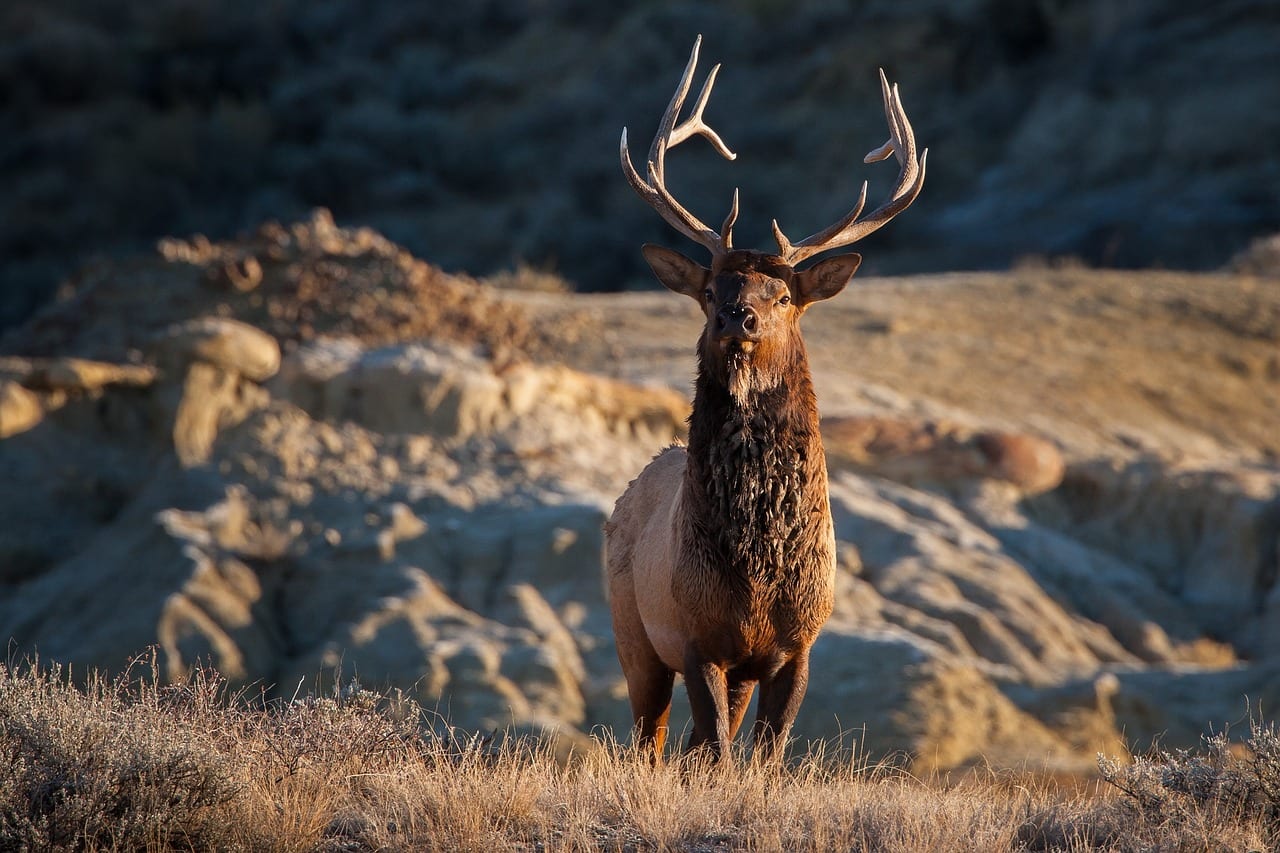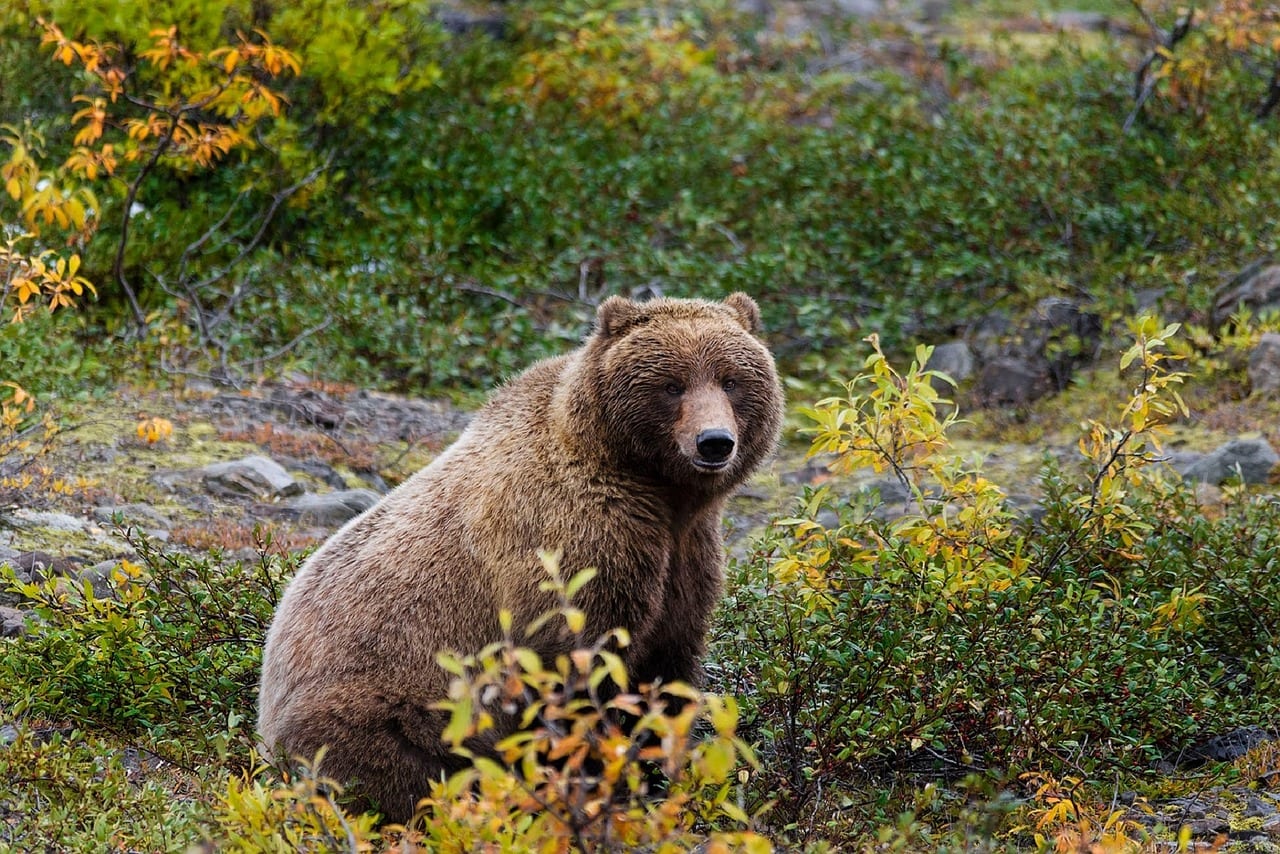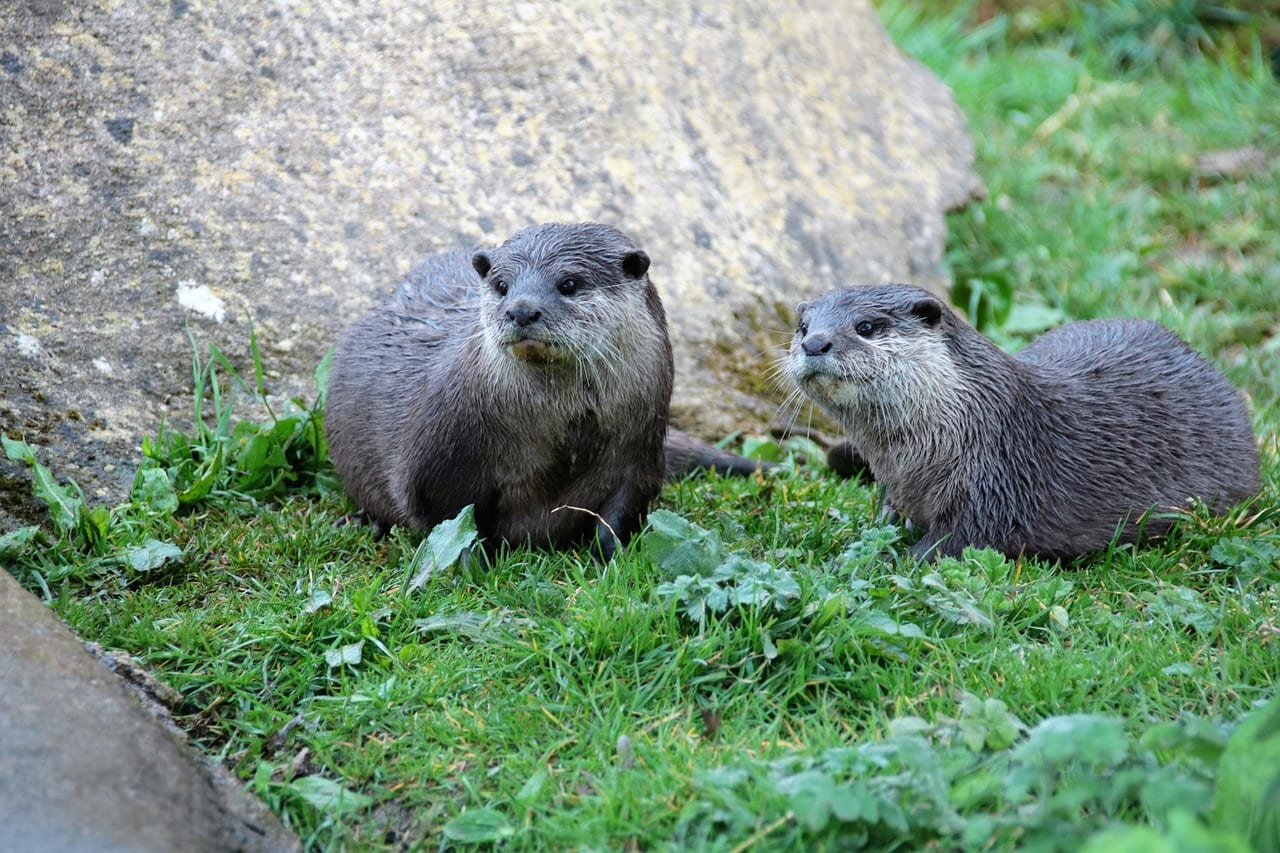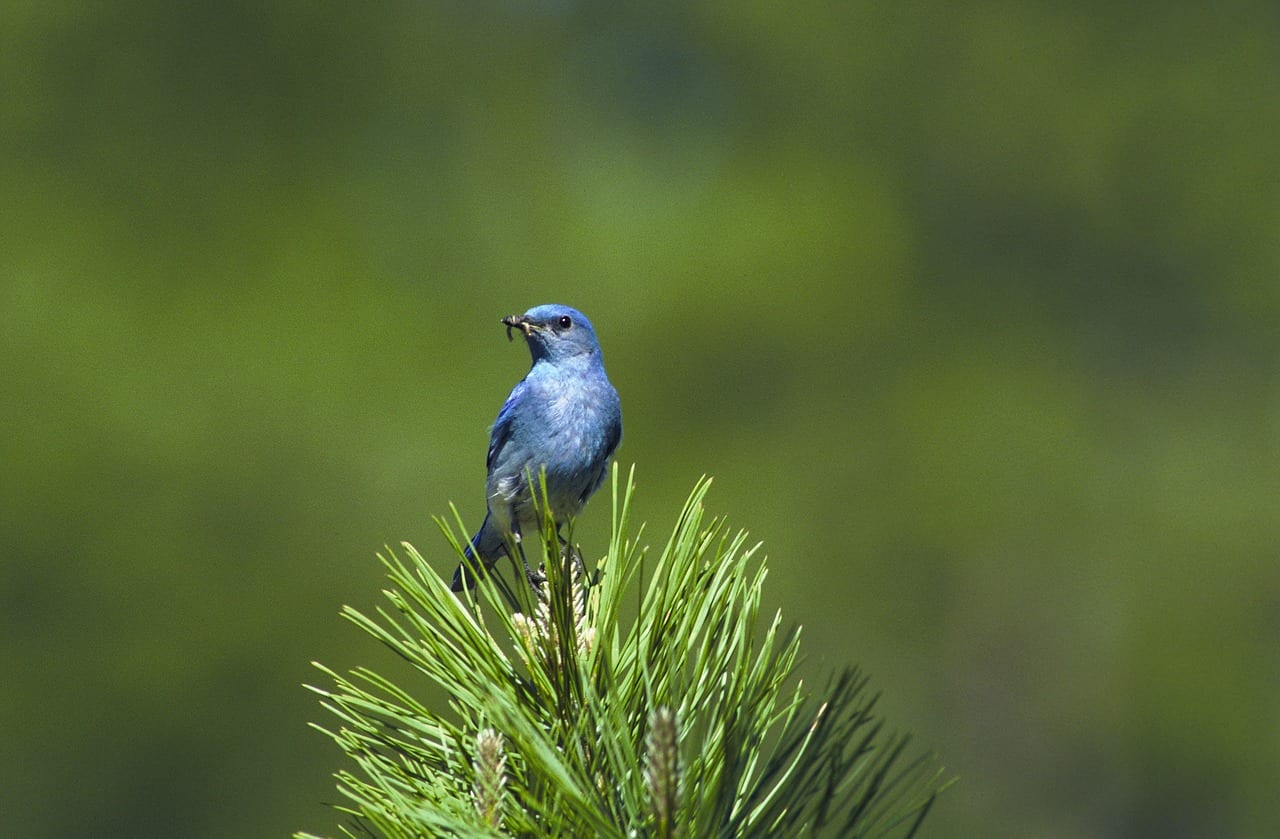How Do Wildlife Corridors Affect Animals In Banff National Park
Banff National Park is a 2500-foursquare-mile protected area maintained by Parks Canada. Located in southern Alberta, this glacier-, forest- and tundra-covered park offers some of the Canadian Rockies' best vistas and wildlife-viewing opportunities. In fact, Banff National Park is home to some of the most impressive mammals in the Western Hemisphere.
Nosotros'll discuss some of the park's most notable inhabitants and provide a few tips for maximizing your viewing opportunities below.
Hooves, Antlers and Horns in Banff National Park
Banff National Park is dwelling to a diverseness of impressive hooved animals.
Four different types of deer alive within Banff National Park. This not only includes white-tailed deer, mule deer and elk, just moose, likewise.

Both deer species are oft spotted relatively shut to roads and buildings, as are the park'south elk. Moose rarely wander far from the park's freshwater reservoirs and wetlands, but visitors occasionally catch a glimpse of these massive creatures.
Mountain goats and bighorn sheep also live within Banff National Park'due south borders. Visitors see both species from time to time, but sightings are relatively rare. The erstwhile tend to frequent the park's high peaks, while the latter are uncommonly wary animals, who rarely allow close approach.
Noon Predators of the Park
Lucky Banff National Park visitors may have the chance to come across wolves, bears or other large predators.
The large hooved animals of Banff National Park are certainly impressive, but the near incredible wildlife species you may see in the park are undoubtedly the large predators. Later all, deer, elk and other hooved animals are common in many Due north American parks, but only a handful will give y'all the chance to see gray wolves and grizzly bears.

The park's grizzly bears feed on a variety of casualty, including fish, rabbits and other small animals. But they'll too grab young, old or injured deer and elk from fourth dimension to time. The park'southward wolves, on the other hand, feed almost exclusively on the park's big ungulates.
Sightings of these animals aren't specially common, every bit predators tend to be secretive animals. This ways they'll frequently keep their altitude from humans. Nevertheless, visitors do occasionally grab a glimpse of these majestic creatures.
Pocket-size Hunters in the Shadows
Although sometimes difficult to find, a diversity of pocket-sized- and medium-sized predators dwell within Banff National Park.
Nigh habitats with a various array of herbivores are also home to a number of predators, and Banff National Park is no exception. The bears and wolves may get the bulk of the attention, only the park's small predators are important too.

Several minor and medium-sized predators telephone call Banff National Park home. Weasels and cherry foxes primarily subsist on rodents and other small prey, while lynx and coyote feed on rabbits and birds. River otters too live inside the park's borders. They spend most of their time hunting for fish, amphibians and mollusks in the park'south rivers and creeks.
The Birds of Banff National Park
A different assortment of bird species inhabits each of the park's habitats.
Banff National Park is dwelling house to more than 280 bird species, including several of the earth's near spectacular species.

Gray jays and mount bluebirds are both commonly seen around the park's roads and buildings, as are pipits and mountain chickadees. A few woodpecker species also call Banff National Park home, simply the American iii-toed woodpecker is the one you're most likely to see.
But information technology is the birds of casualty that take center stage in Banff National Park. Bald and golden eagles are ii of the largest and most impressive species. The former tend to hunt the park's waterways looking for fish, while the latter adopt terrestrial prey, such as rabbits and pikas.
Ospreys hunt the same river valleys that bald eagles do, while red-tailed hawks stick to country-dwelling prey, every bit the golden eagles exercise. Loons, mallards and a variety of other waterfowl inhabit the park'southward lowest elevations, while the white-tailed ptarmigan frequents the park'south highest elevations.
Wild animals-Viewing Tips
Maximize the number of animals you become to run across on your trip by employing the post-obit tips.
While Banff National Park offers excellent wildlife-viewing opportunities, there are a few things you can do to make the most of your trip. Simply effort to cover the tips and tricks discussed below to brand the nigh of your Banff National Park adventure.
- Plan your trip for the summer. While it is ordinarily wise to avert many North American parks in the summer, you'll typically have the best adventure of seeing a multifariousness of wildlife species during the warm summer. This is when most of the park'south inhabitants are nearly active, and many will be accompanied by their young.
- Binoculars are a must. Several portions of Banff National Park are difficult to achieve, and unfortunately, many of these places harbor some of the park'southward virtually beautiful wild animals species. However, if yous bring along a good pair of binoculars, you should be able to increment the number of animals you meet.
- Bring bug spray during the warmer portions of the year. Because of its northern location, many Banff National Park visitors fail to realize how many mosquitos and biting flies appear during the spring, summer and early fall. Accordingly, you'll desire to make sure yous bring a high-quality bug spray to keep the biting swarms at bay.
- Keep your optics peeled when driving along the park'south roads. Many visitors take to the park's trail system to see wild fauna species. And while this is often a great way to come across the park's myriad animals, you'll also desire to continue a good center out while driving around the park. Many of the park's deer and elk, for case, often feed within sight of the park'due south roads.

Tell Us About Your Experiences!
Banff National Park is one of the near impressive parks in all of North America. And considering it tends to be a picayune less crowded than some of the other parks of the Rocky Mountains, information technology is a great place for wildlife lovers to visit.
Have you ever been to Banff National Park? We'd honey to hear about your experiences! Tell us all most the wildlife you observed during your trip in the comments below.
Source: https://animals.net/banff-national-park/
Posted by: simpsonderignatim.blogspot.com

0 Response to "How Do Wildlife Corridors Affect Animals In Banff National Park"
Post a Comment